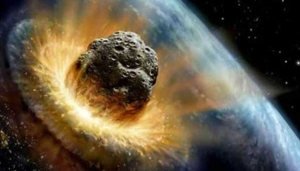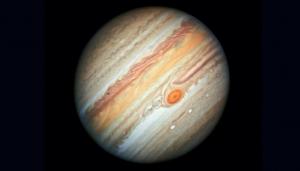LAB REPORT
Science and Technology Making Headlines
April 22, 2016


Dawn Shaugnessy analyzes a sample of the unyet named element 117.
Landing a place in history
When it comes to finding a place in history, Dawn Shaughnessy, head of Lawrence Livermore’s Heavy Element Group, has it covered.
After helping to find five of the six most recently discovered elements and helping name element 116 Livermorium, Shaughnessy’s name will definitely go down in the history books.
But discovering new elements, which only last for a fraction of a second, is no easy feat. "It is very patience oriented...and it can be exciting," Shaughnessy said. "Understanding how this works, somehow translates to how the universe is continuing."


Utility-scale solar energy, which saw the completion of several major projects in recent years, was up 25 percent, according to an LLNL analysis of U.S. energy use.
Americans using less energy
Americans used less energy overall in 2015 than the previous year, according to the most recent energy flow charts released by Lawrence Livermore National Laboratory.
Each year, the Laboratory releases energy flow charts that illustrate the nation's consumption and use of energy. Overall, Americans used 0.8 quadrillion BTU, or quads, less in 2015 than in 2014. (A BTU or British Thermal Unit is a unit of measurement for energy; 3,600 BTU is equivalent to about 1 kilowatt-hour).
Natural gas use increased by 3 percent to 28.3 quads while coal use decreased by 12 percent to 15.7 quads. Renewable energy continues to grow, with use of wind energy up 5 percent, geothermal energy up 11 percent and residential solar energy up 11 percent. Utility scale solar energy, which saw the completion of several major projects in recent years, was up 25 percent. Prices for photovoltaic panels have fallen dramatically over the past decade, contributing to solar energy's rapid growth.


It has been hypothesized that lonsdaleite forms when graphite-bearing meteors strike the Earth. The violent impact generates incredible heat and pressure, transforming the graphite into diamond while retaining the graphite’s original hexagonal structure
Diamonds mark the spot
In 1967, a hexagonal form of diamond, later named lonsdaleite, was identified for the first time inside fragments of the Canyon Diablo meteorite, the asteroid that created the Barringer Crater in Arizona.
Since then, occurrences of lonsdaleite and nanometer-sized diamonds have been speculated to serve as a marker for meteorite impacts, having also been connected to the Tunguska explosion in Russia, the Ries crater in Germany, the Younger Dryas event in sites across North America and more.
It has been hypothesized that lonsdaleite forms when graphite-bearing meteors strike the Earth. The violent impact generates incredible heat and pressure, transforming the graphite into diamond while retaining the graphite’s original hexagonal structure. In recent research, a team including scientists from Lawrence Livermore looked at the structural state immediately after the shock transit, the timescales involved and the influence of crystalline orientation.


Lawrence Livermore researchers are exploring interiors of giant gas planets such as Jupiter. Image courtesy of NASA.
Driving into a gas giant
Hydrogen is the most abundant element found in the universe, making up nearly three-quarters of all matter. Despite its prevalence, questions about the element remain.
In new research, a team of scientists, including researchers from Lawrence Livermore National Laboratory, aims to answer one of those questions – what happens to hydrogen at high pressure.
“This research tells us something about the process of hydrogen’s transformation from insulator to metal at high pressure,” said lead author Paul Davis. “This work helps us understand the physics at work inside giant planets like Jupiter. The details of how hydrogen dissociates under pressure and becomes electrically conductive are important for scientists seeking to understand planetary interiors and the dynamo action that causes their magnetic fields.”

Many clouds surround the Southern Ocean. Lawrence Livermore scientists have found that climate models don’t accurately portray clouds and underestimate global warming. Photo courtesy of NASA.
Global warming is cloudy
Clouds are central to climate because their white surfaces reflect sunlight back to space, keeping the planet cooler. But they also trap infrared or heat radiation and prevent it from escaping the Earth.
Lawrence Livermore and Yale University scientists looked at clouds that contain both liquid and ice, known as mixed-phase clouds. Most climate models suggest that clouds will better be able to reflect light into space as global warming speeds up the melting of ice into a liquid in coming decades. Liquid water tends to reflect more light back into space than ice.
But the new research suggests that most models overestimate how much ice currently exists in mixed-phase clouds. That finding could dramatically increase the forecast speed of temperature rise in the coming decades, with temperatures more than 1 degree Celsius higher than anticipated in current models.


This schematic illustration shows metal oxides tented inside graphene. Many metal oxide/graphene composites offer unexpected capacity synergy that helps to increase storage capacity. Image by Ryan Chen/LLNL
Pump it up
Material scientists at Lawrence Livermore have found certain metal oxides increase capacity and improve cycling performance in lithium-ion batteries.
The team synthesized and compared the electrochemical performance of three graphene metal oxide nanocomposites and found that two of them greatly improved reversible lithium storage capacity.
Graphene-metal oxide (GMO) nanocomposites have become renowned for their potential in energy storage and conversion, including capacitors, lithium-ion batteries, sensors and catalysis (for fuel cells, water splitting and air cleaning).





